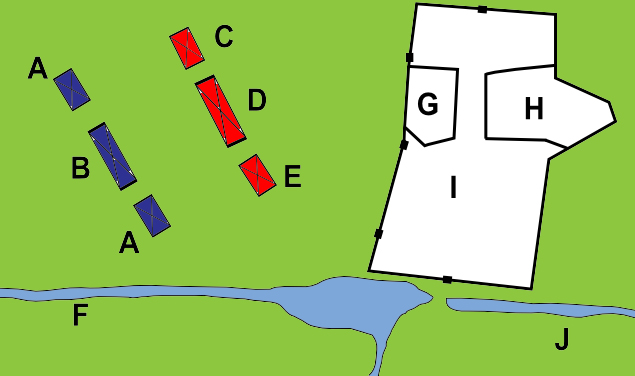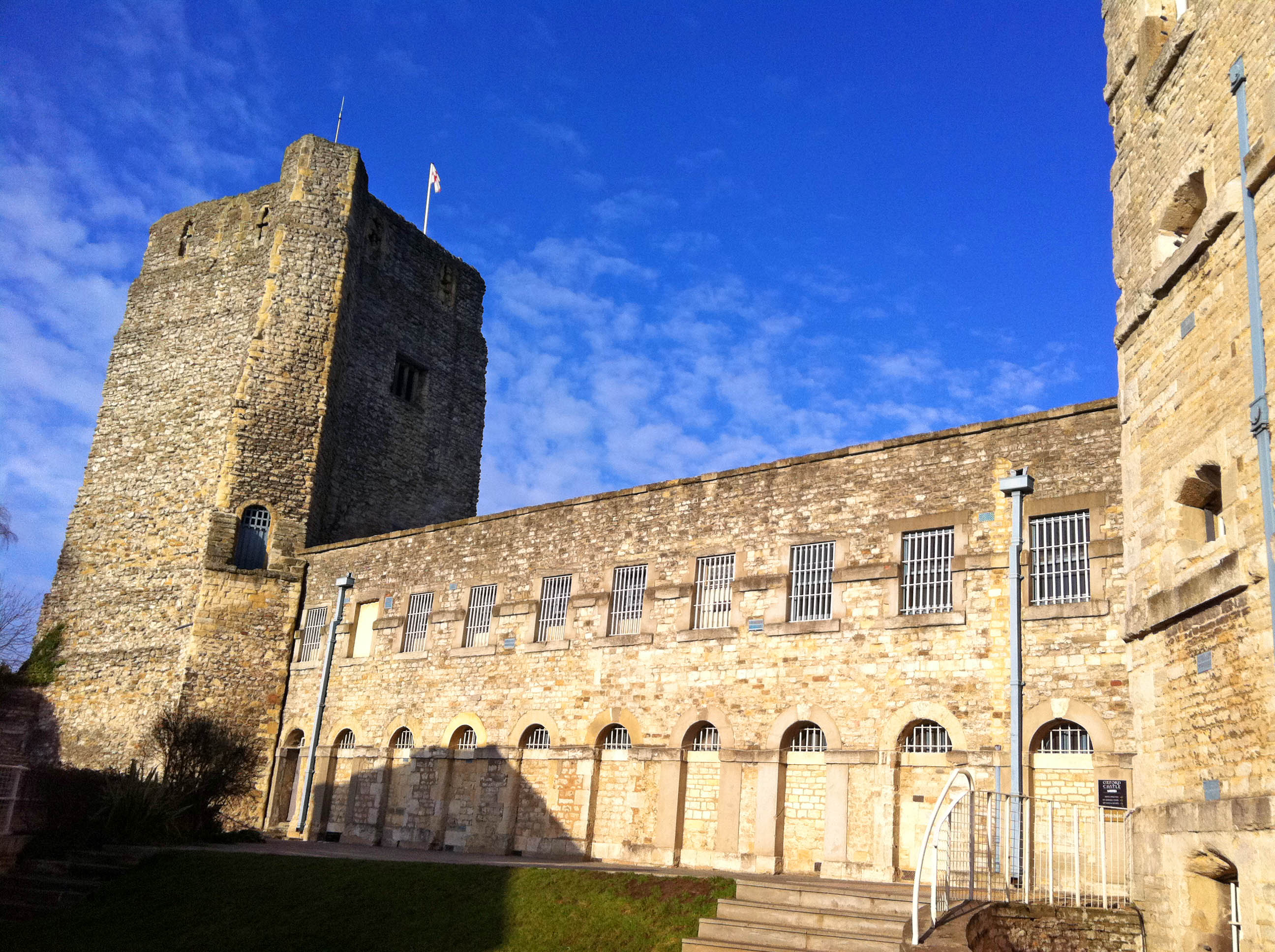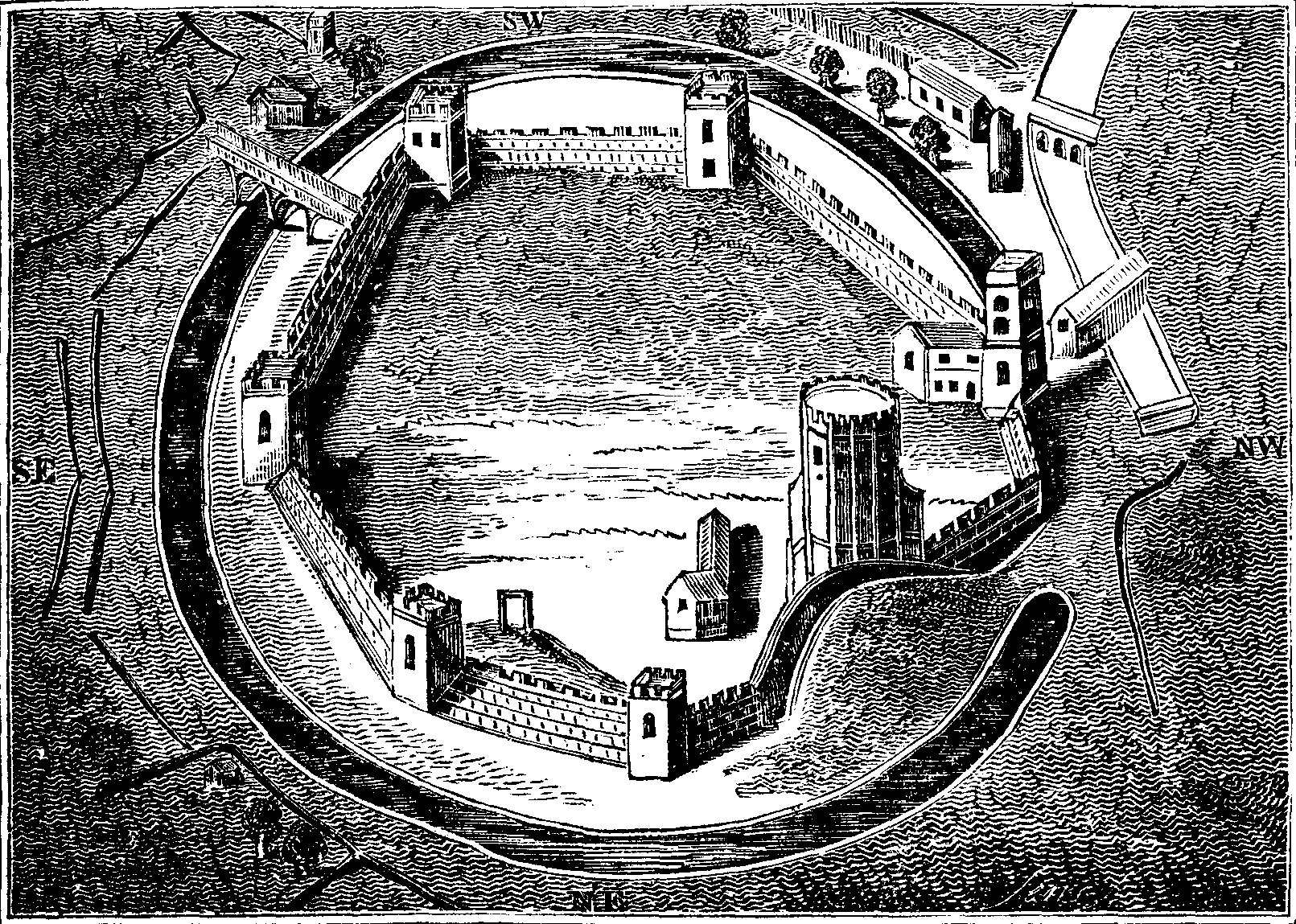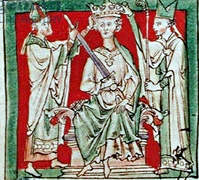|
The Anarchy
The Anarchy was a civil war in England and Normandy between 1138 and 1153, which resulted in a widespread breakdown in law and order. The conflict was a war of succession precipitated by the accidental death of William Adelin, the only legitimate son of King Henry I, who drowned in the sinking of the '' White Ship'' in 1120. Henry sought to be succeeded by his daughter, known as Empress Matilda, but was only partially successful in convincing the nobility to support her. On Henry's death in 1135, his nephew Stephen of Blois seized the throne, with the help of Stephen's brother Henry of Blois, who was the bishop of Winchester. Stephen's early reign saw fierce fighting with disloyal English barons, rebellious Welsh leaders, and Scottish invaders. Following a major rebellion in the south-west of England, Matilda invaded in 1139 with the help of her half-brother Robert of Gloucester. In the initial years of civil war, neither side was able to achieve a decisive advantage; ... [...More Info...] [...Related Items...] OR: [Wikipedia] [Google] [Baidu] |
Battle Of Lincoln (1141)
The Battle of Lincoln, or the First Battle of Lincoln, occurred on 2 February 1141 in Lincoln, England between King Stephen of England and forces loyal to Empress Matilda. Stephen was captured during the battle, imprisoned, and effectively deposed while Matilda ruled for a short time. Account The forces of King Stephen of England had been besieging Lincoln Castle but were themselves attacked by a relief force loyal to Empress Matilda and commanded by Robert, 1st Earl of Gloucester, Matilda's half-brother. The Angevin army consisted of the divisions of Robert's men, those of Ranulf, Earl of Chester and those disinherited by Stephen, while on the flank was a mass of Welsh troops led by Madog ap Maredudd, Lord of Powys, and Cadwaladr ap Gruffydd. Cadwaladr was the brother of Owain, King of Gwynedd, but Owain did not support any side in the Anarchy. Stephen's force included William of Ypres; Simon of Senlis; Gilbert of Hertford; William of Aumale, Alan of Richmond an ... [...More Info...] [...Related Items...] OR: [Wikipedia] [Google] [Baidu] |
Henry Of Blois
Henry of Blois ( c. 1096 8 August 1171), often known as Henry of Winchester, was Abbot of Glastonbury Abbey from 1126, and Bishop of Winchester from 1129 to his death. He was a younger son of Stephen Henry, Count of Blois by Adela of Normandy, daughter of William the Conqueror and Matilda of Flanders. Thus, he was a younger brother of Stephen, King of England, and a grandchild of William the Conqueror. Henry was also a major patron of the arts. Early life and education Henry was one of five sons of Stephen II, Count of Blois, by Adela of Normandy (daughter of William the Conqueror) and the younger brother of King Stephen.British History Online: Bishops of Winchester ; accessed on 2 November 2007 His birth date is uncertain, along with his siblings but he was the 4th or youngest son and he was mos ... [...More Info...] [...Related Items...] OR: [Wikipedia] [Google] [Baidu] |
Northern England
Northern England, also known as the North of England, the North Country, or simply the North, is the northern area of England. It broadly corresponds to the former borders of Angle Northumbria, the Anglo-Scandinavian Kingdom of Jorvik, and the Celt Britonic Yr Hen Ogledd Kingdoms. The common governmental definition of the North is a grouping of three statistical regions: the North East, the North West, and Yorkshire and the Humber. These had a combined population of 14.9 million at the 2011 census, an area of and 17 cities. Northern England is culturally and economically distinct from both the Midlands and the South of England. The area's northern boundary is the border with Scotland, its western the border with Wales, and its eastern the North Sea; there are varying interpretations of where the southern border with the Midlands lies culturally; the Midlands is often also split by closeness to the North and the South. Many Industrial Revolution innovations began ... [...More Info...] [...Related Items...] OR: [Wikipedia] [Google] [Baidu] |
Geoffrey V Of Anjou
Geoffrey V (24 August 1113 – 7 September 1151), called the Handsome, the Fair (french: link=no, le Bel) or Plantagenet, was the count of Anjou, Touraine and Maine by inheritance from 1129, and also Duke of Normandy by conquest from 1144. His marriage to Empress Matilda, daughter of King Henry I of England, led to the centuries-long reign of the Plantagenet dynasty in England. The name "Plantagenet" was taken from Geoffrey's epithet. Geoffrey's ancestral domain of Anjou gave rise to the name Angevin, and what modern historians name as the Angevin Empire in the 12th century. Early life Geoffrey was the elder son of Fulk V of Anjou and Ermengarde of Maine. Geoffrey received his nickname from the yellow sprig of broom blossom (''genêt'' is the French name for the ''planta genista'', or broom shrub) he wore in his hat. The chronicler John of Marmoutier described Geoffrey as handsome, red haired, jovial, and a great warrior. King Henry I of England, having heard reports ... [...More Info...] [...Related Items...] OR: [Wikipedia] [Google] [Baidu] |
River Thames
The River Thames ( ), known alternatively in parts as the River Isis, is a river that flows through southern England including London. At , it is the longest river entirely in England and the second-longest in the United Kingdom, after the River Severn. The river rises at Thames Head in Gloucestershire, and flows into the North Sea near Tilbury, Essex and Gravesend, Kent, via the Thames Estuary. From the west it flows through Oxford (where it is sometimes called the Isis), Reading, Henley-on-Thames and Windsor. The Thames also drains the whole of Greater London. In August 2022, the source of the river moved five miles to beyond Somerford Keynes due to the heatwave in July 2022. The lower reaches of the river are called the Tideway, derived from its long tidal reach up to Teddington Lock. Its tidal section includes most of its London stretch and has a rise and fall of . From Oxford to the Estuary the Thames drops by 55 metres. Running through some of the drier ... [...More Info...] [...Related Items...] OR: [Wikipedia] [Google] [Baidu] |
Oxford Castle
Oxford Castle is a large, partly ruined medieval castle on the western side of central Oxford in Oxfordshire, England. Most of the original moated, wooden motte and bailey castle was replaced in stone in the late 12th or early 13th century and the castle played an important role in the conflict of the Anarchy. In the 14th century the military value of the castle diminished and the site became used primarily for county administration and as a prison. The surviving rectangular St George's Tower is now believed to pre-date the remainder of the castle and be a watch tower associated with the original Saxon west gate of the city. Most of the castle was destroyed in the English Civil War and by the 18th century the remaining buildings had become Oxford's local prison. A new prison complex was built on the site from 1785 onwards and expanded in 1876; this became HM Prison Oxford. The prison closed in 1996 and was redeveloped as a hotel and visitor attraction. The medieval remains of ... [...More Info...] [...Related Items...] OR: [Wikipedia] [Google] [Baidu] |
Siege Of Oxford (1142)
The siege of Oxford took place during The Anarchy—a period of civil war following the death of Henry I of England without an heir—in 1142. Fought between his nephew, Stephen of Blois, and his daughter, the Empress Matilda (or Maud), who had recently been expelled from her base in Westminster and chosen the City of Oxford as her new headquarters. Oxford by now was effectively a regional capital and important in its own right. It was a well-defended city with both rivers and walls protecting it, and was also strategically important as it was at a crossroads between the north, south-east and west of England, and also not far from London. By now the civil war was at its height, yet neither party was able to get an edge on the other: both had suffered swings of fate in the last few years which had alternately put them ahead, and then behind, their rival. Stephen, for instance, had been captured by Matilda's army in 1141, but later in the year, Matilda's half-brother and chief ... [...More Info...] [...Related Items...] OR: [Wikipedia] [Google] [Baidu] |
Prisoner Exchange
A prisoner exchange or prisoner swap is a deal between opposing sides in a conflict to release prisoners: prisoners of war, spies, hostages, etc. Sometimes, dead bodies are involved in an exchange. Geneva Conventions Under the Geneva Conventions, prisoners who ''cannot'' contribute to the war effort because of illness or disability are entitled to be repatriated to their home country. That is regardless of number of prisoners so affected; the detaining power cannot refuse a genuine request. Under the Geneva Convention (1929), this is covered by Articles 68 to 74, and the annex. One of the largest exchange programmes was run by the International Red Cross during World War II under these terms. Under the Third Geneva Convention of 1949, that is covered by Articles 109 to 117. The Second World War in Yugoslavia saw a brutal struggle between the armed forces of the Third Reich and the communist-led Partisans. Despite that, the two sides negotiated prisoner exchanges virtual ... [...More Info...] [...Related Items...] OR: [Wikipedia] [Google] [Baidu] |
Rout Of Winchester
In the Rout of Winchester (14 September 1141) the army of imprisoned King Stephen of England, led by his wife, Queen Matilda of Boulogne, Stephen's brother Bishop Henry of Blois, and William of Ypres, faced the army of Stephen's cousin Empress Matilda, whose forces were commanded by her half-brother Earl Robert of Gloucester. After Empress Matilda's army besieged a castle on the edge of Winchester, Queen Matilda's army arrived and blockaded the Angevin army within the city. Cut off from supplies, the Angevin army gave up the siege, then was crushed as it began to retreat. Robert of Gloucester was captured and was subsequently exchanged for Stephen, who was returned to the throne of England. However, the civil war known as The Anarchy dragged on with neither side gaining an advantage. Background Stephen usurps the throne When William Adelin drowned in the ''White Ship'', King Henry I of England was left with no male heirs. A second marriage to 18-year-old Adeliza of Louvain w ... [...More Info...] [...Related Items...] OR: [Wikipedia] [Google] [Baidu] |
Mercenary
A mercenary, sometimes also known as a soldier of fortune or hired gun, is a private individual, particularly a soldier, that joins a military conflict for personal profit, is otherwise an outsider to the conflict, and is not a member of any other official military. Mercenaries fight for money or other forms of payment rather than for political interests. Beginning in the 20th century, mercenaries have increasingly come to be seen as less entitled to protections by rules of war than non-mercenaries. The Geneva Conventions declare that mercenaries are not recognized as legitimate combatants and do not have to be granted the same legal protections as captured service personnel of the armed forces. In practice, whether or not a person is a mercenary may be a matter of degree, as financial and political interests may overlap. Modern mercenary organizations are generally referred to as private military companies or PMCs. Laws of war Protocol Additional GC 1977 (APGC77) is ... [...More Info...] [...Related Items...] OR: [Wikipedia] [Google] [Baidu] |
Knights
A knight is a person granted an honorary title of knighthood by a head of state (including the Pope) or representative for service to the monarch, the church or the country, especially in a military capacity. Knighthood finds origins in the Greek '' hippeis'' and '' hoplite'' (ἱππεῖς) and Roman ''eques'' and '' centurion'' of classical antiquity. In the Early Middle Ages in Europe, knighthood was conferred upon mounted warriors. During the High Middle Ages, knighthood was considered a class of lower nobility. By the Late Middle Ages, the rank had become associated with the ideals of chivalry, a code of conduct for the perfect courtly Christian warrior. Often, a knight was a vassal who served as an elite fighter or a bodyguard for a lord, with payment in the form of land holdings. The lords trusted the knights, who were skilled in battle on horseback. Knighthood in the Middle Ages was closely linked with horsemanship (and especially the joust) from its origins ... [...More Info...] [...Related Items...] OR: [Wikipedia] [Google] [Baidu] |
Attrition Warfare
Attrition warfare is a military strategy consisting of belligerent attempts to win a war by wearing down the enemy to the point of collapse through continuous losses in personnel and materiel. The word ''attrition'' comes from the Latin root , meaning "to rub against", similar to the "grinding down" of the opponent's forces in attrition warfare. Strategic considerations Attrition warfare represents an attempt to grind down an opponent's ability to make war by destroying their military resources by any means including guerrilla warfare, people's war, scorched earth and all kind of battles apart from a decisive battle. Attrition warfare does not include all kinds of Blitzkrieg or using concentration of force and a decisive battle to win. The side that reinforces their army at a higher speed will normally win the war. Clausewitz called it the exhaustion of the adversary. A side that perceives itself to be at a marked disadvantage may deliberately seek out attrition warfare to ... [...More Info...] [...Related Items...] OR: [Wikipedia] [Google] [Baidu] |









.gif)